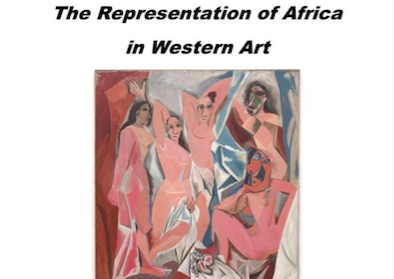Walking into Bellarmine Hall, it was an entirely new environment. I had explored most of the Fairfield University campus, but never had a reason to go inside of this particular building before. Inside Bellarmine lies the entrance to the Fairfield University Art Museum housed in the lower floor of the building, which I decided not to enter in the past to avoid getting lost. But I now had a reason with the “The Representation of Africa in Western Art” lecture hosted in the Diffley Board Room.
Dr. Scott Lacy PhD, professor of sociology and anthropology, was introduced to those in attendance by a staff member as an anthropologist and avid art collector. Having been an aid worker since ‘94, Lacy is better recognized as the founder of African Sky Inc., a non-profit organization focused on helping the people of Mali with social change and education. Upon getting to the front of the board room, distinct objects could be seen as the lecture began. Three African artifacts including a helmet, mask and a colorful painting could be seen.
Despite the topic being art, Lacy stated how anthropologists were early curators and collectors of African art in the late 1800s. During the Scientific Revolution, the field of science developed methods of study for animal and plant biology. John Locke believed that if such methods could be used to study animal and plants, then they could also apply to humans. Charles Darwin’s theory of natural selection was applied to society in general, basing the primitivity of societies with their level of weaponry, culture and government. Upon hearing of Africa, Europeans felt as though they could help them by introducing civility to their lives.
Instead of help, natives were met with colonial conquest. Slavery, conversion of faith and the hauling of African artifacts followed. Artifacts brought back were not meant to valued, even when they were exported in large amounts. Instead, they were thought of as souvenirs for traveling to Africa. Paintings and sculptures could be found in flea markets where no one really cared about them. Although anthropologists were sent to supervise the actions of the travelers, this didn’t save natives from being subjected to their “help.”
When the Chicago World Fair commenced in 1893, the anthropological exhibits, dubbed “The Midway,” displayed how cultures appeared using juxtaposition. Africans brought as slaves were used in creating authenticity for their specific exhibit where Europeans viewed the primitivity through items including huts and tools. Compared to displays of scientific innovation, “The Midway” was seen as uninteresting or poorly seen.
Despite the lack of value the majority of people hold in African art, anthropologists took it upon themselves to create displays and exhibits in museums. They even constructed mini-museums, which displayed solely African art. The art piqued the interests of many, including Pablo Picasso. His works, such as “Las Demois d’Avignon,” followed the styles of African art with their exaggerated body proportions.
Later on in the United States, the Harlem Renaissance movement called for African identity and heritage in modern art. Soon, anthropology could no longer base findings on artifacts; instead, they created films which observed natives in their own culture. Documentaries made by people such as Jean Rouch and Robert Flaherty recorded the lives of African and other cultures with precision.
Before ending the lecture, Lacy brought up the purpose of the painting: a friend in Cameroon painted it with regards to their people’s perspective. Currently, the nation is caught between two wars, yet, even within war, the painting shows the optimism that the people of Cameroon have in a time of crisis.


Leave a Reply